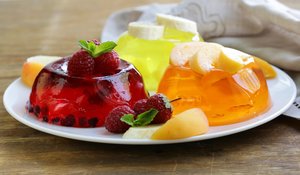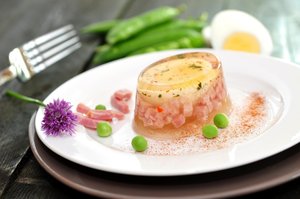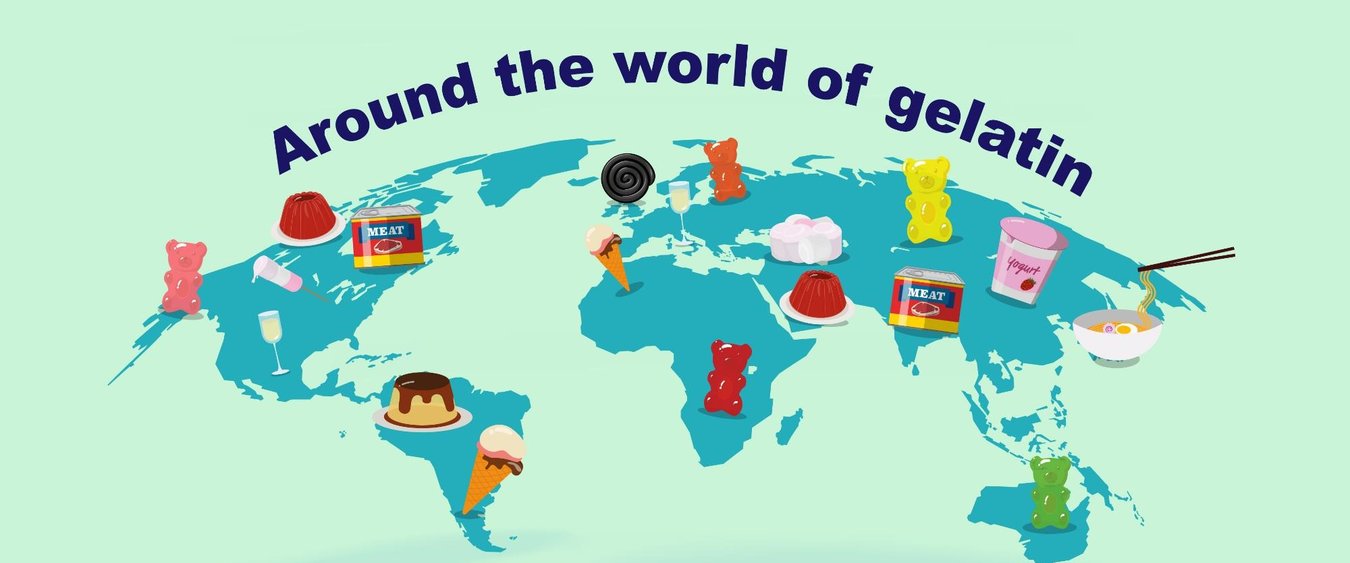
Gelatin food applications - Since our ancestors worked out how to extract gelatin from cooked hides, bones and meats, centuries of experimentation have seen gelatin embedded within international food culture. Gelatin has helped create new foods and been the engine driving foods to evolve in novel ways.
“Gelatin has lots of different functionalities and this type of flexibility has helped design many types of foods and recipes over the years,” says Claude Capdepon, Technical support and Application labs manager at Rousselot. “Its unique combination of textural properties, aeration and stabilization has made it the stand-out food ingredient it is today.”.
“And not everyone knows it,” she says, “but gelatin is present in an incredibly broad range of applications within the food supply.” That includes local food specialties using gelatin all over the world from canned foods to pâtés to stocks to marshmallows to jellies and more.
All of this activity has helped make Rousselot what it is today, as Claude observes: “A worldwide production with gelatin plants in North and South America, Europe and China.”
The candy-fication of licorice

Take licorice candy. This gelatin-based food specialty is eaten globally and is most popular in northern Europe especially the Netherlands, the UK (Yorkshire pennies anyone?) and Scandinavia usually in black licorice shoestring or twist candy form.
Licorice has become so synonymous with the shoestring or ribbon format that other candies in this form are often just called ‘licorice’, even if they actually possess no natural or synthetic licorice.
Happy birthday gummy bears!
Gelatin has played an even bigger role in the development of the gummy bear, now gelatin’s biggest food category and officially a proud 100 years old this year… Happy birthday gummy bears!
It was in 1922 that German confectionery pioneer and Haribo founder Hans Riegel invented and launched the gummy bear.

In the coterie of gelatin-based fruit chews like wine gums and gumdrops present in the UK from the turn of the century, the little gelatin-based, colorful bears soon took off in Germany, the rest of Europe and are now near-staple candies loved by children and adults alike the world over.
Gelatin-based gummy bears have also more recently become popular as a new dietary supplement format pushing the global gummy market above $16 billion(1).
Claude, who has been working with gelatin for many decades, says the global confectionery market is still growing and willing to innovate. “While the biggest gummy producers are moderately innovating – their gelatin gummy bears are still popular after decades – a lot of confectioners are still proposing new types of gelatin-based candies to the consumers. This is possible thanks to the multiple textures and mouthfeel brought by gelatin.”
Jelly feeds many bellies

The gummy bear is not alone in conquering the planet.
Jelly, which unsurprisingly derives its name from gelatin, was probably first made in Medieval Europe or the Middle East as a dessert and it remains popular in those places.
Today it may be best known via the American brand Jell-O, which retains a place in the popular American culinary imagination, but it has found a more global role as both a tasty dessert and an economic foodstuff. (But don’t call it jelly in the US – for Americans, jelly is jam.)
Jell-O was actually the first mass-produced gelatin-based food, debuting in 1897 in New York and employing a powdered gelatin patent granted in 1845.
Jelly has played an important nutritional role in regions or population groups where hydration can be a problem, such as Latin America.
For children, the elderly or those with chronic illnesses like Alzheimer’s for whom drinking water can be problematic, jelly is an important alternative(2).
Canned meat/aspic

Canned meats were being produced in France in the early 1800s and became popularized and traded out of places like Argentina after the invention of the can opener in 1876.
Gelatin’s flexibility came to the fore as the primary functional ingredient for aspic, where meats and vegetables are encased within a layer of gelatin.
Gelatin food applications

Other foods like marshmallows – usually made from just egg albumen and gelatin – remain popular after first appearing in ancient Egypt then re-emerging in France in mid-1800s before being popularized in the US and Europe and places like Australia in the 20th century. Marshmallows remain a favorite to roast around a campfire and have become a common accompaniment to the global spread of cafe babyccinos!
In countries like China, gelatin is seeing a lift in dairy products like yoghurt to add to a longer history-of-use in foods like dumplings.
The list goes on from mousses, panna cotta, Bavarian desserts, processed cheese to ice cream and more.
‘Very Special’: Gelatin food potential

Claude says gelatin’s global popularity is no surprise, given its, “combined functionalities and unique properties.” “Because it is a pure protein, it helps to foam,” she says. “It can help create aerated confectionery or desserts, stabilizing sauces and meat preparations, or chilled noodle soups and frozen dumplings.”
“Gelatin is an ingredient not an additive, it can be used in any kind of application without any risk of allergy or intolerance.”
Gelatin’s potential in food, drinks and more is far from achieved, especially when considering that, in confectionery for example, “The old brands are still there proposing largely the same kinds of products as decades ago.”
In this way Claude notes Rousselot application labs have an important role to play. “We are always innovating with gelatin and proposing prototypes,” she says. “We are proactive. We show food makers what can be done with gelatin. And that’s a lot!”
